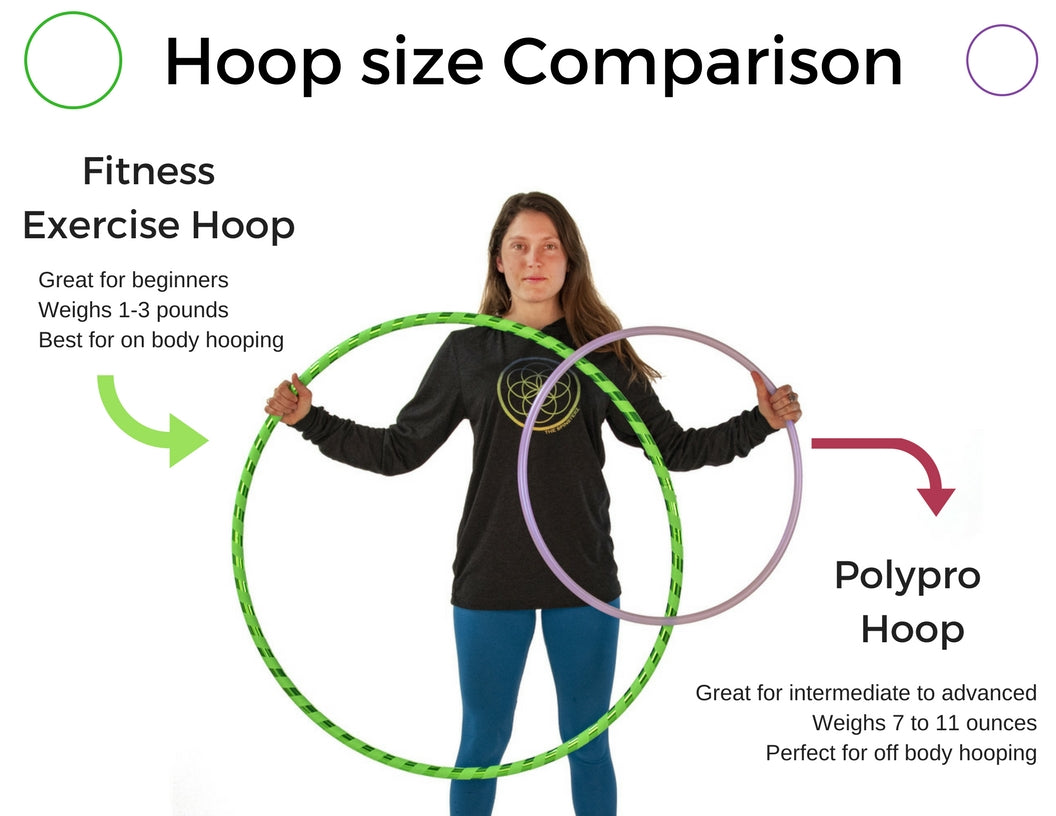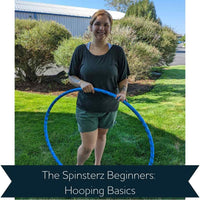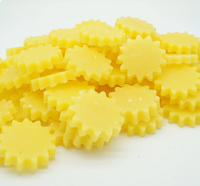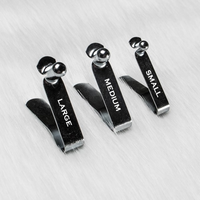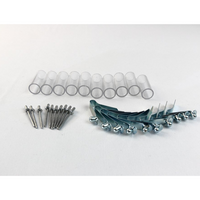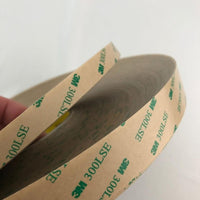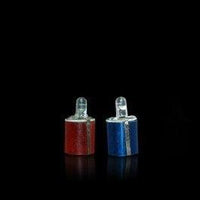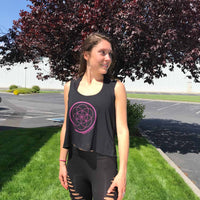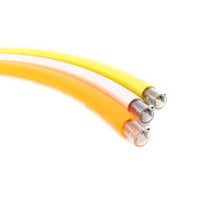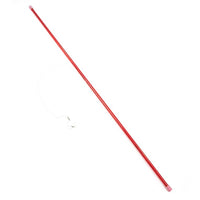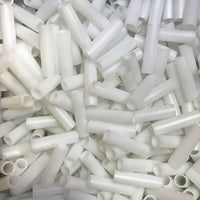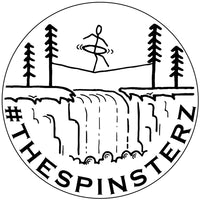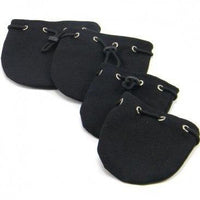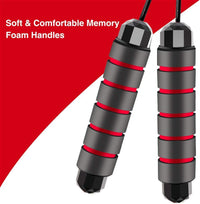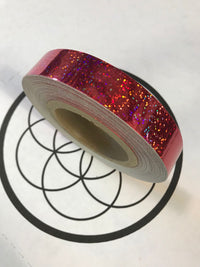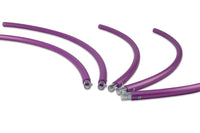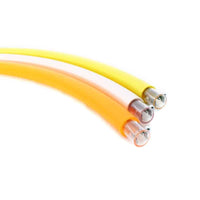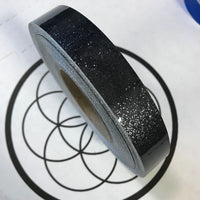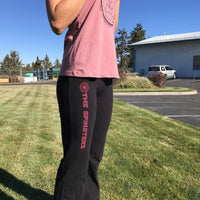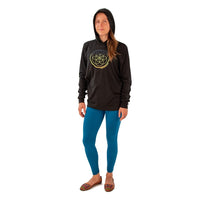Well, how DO you transition from big hoops to small hoops?
If you love your big hoops and don’t ever want to down-size, that’s okay! However, this article may not be for you.
If you have the desire to use a smaller, lighter hoop, you have come to the right place. This article explains in detail how you can successfully transition from your big, heavy PE (polyethylene) beginner hoop to a smaller, lighter hoop. It also includes why you might want to downsize.
DISCLAIMER: This article is not meant to tell hoopers what hoop sizes to use. I am not trying to “sell” polypro or HDPE. This article is to give advice to those who want to switch to smaller, lighter hoops and educate them on their choices. Ultimately it can be really nice to have hoops of ALL sizes depending on your mood and desired flow experience.
You may ask WHY would I want to use a smaller hoop?
If you already know why you want to go smaller, just go ahead and skip this section.
1. Easier to carry around
Have you noticed how difficult it is to carry and travel with your big beginner hoop? Most of them are around 38-42 inches in size and weigh around 1-2 pounds. The figure-8 collapsible or sectional piece beginner hoops are great for travel but…
A. Not all of them are made collapsible or sectional, so you could be stuck with a 42 inch hoop that may not even fit in your car
B. Having them collapsed in a figure 8 can cause the connections to get ruined and make the hoop crooked and wavy.
C. All of that weight on your shoulder when you carry it can really irritate your back, even if it is collapsed. (talking from experience)
2. More versatile
The number of moves, tricks, and techniques you can do increase substantially with a smaller hoop. For example, coin flips, spinning the hoop horizontally in front of you, breaks, more comfortable chest/body rolls (less scary too!), more smooth and effortless isolations, and more.
At the beginning, you may have one large beginner hoop, one medium hoop, and a small hoop for tricks. This is what I recommend. However, when you want to transition, it is easier to have just one hoop that you can use for all of your hooping needs. Size changing hoops are great to travel with, and you get multiple hoops in one! Whether it is waist hooping, chest hooping, or just isolations.
3. Less bruising and less weight
Even if you can flow well with a large hoop, it is likely to continue to cause bruises here and there. The heavier the hoop, the more pressure on your body during rotations. As I mentioned before, those beginner hoops are usually between 1 and 2 pounds. Some of them can weigh as much as 3+ pounds.
With an HDPE or a polypro hoop, you will see weights between 5 ounces and 10 ounces (depending on the size and tubing width). A 5/8 width tubing HDPE or polypro hoop around 30 inches will weigh approximately 5-6 ounces. When referring to HDPE or polypro hoops, a 3/4 tubing hoop is thicker and heavier than a 5/8 tubing hoop.

HDPE and polypro are measured differently than PE hoops. PE hoops are your typical beginner hoops. They are made with black tubing and come in 3/4″ or 1/2″. Note that 1/2″ PE is the same width as a 3/4″ polypro or HDPE hoop. This is because one is measured by the inside of the tubing, and one is measured on the outside of the tubing. Some companies measure the total size of the actual hoop by ID (inner diameter of the tubing) or OD (outer diameter of the tubing). For example, a 29″ ID hoop is around 30 or 31″ OD.
4. More dancing or flow
As I moved down in size with my hoops, my flow actually improved each time. I started with a 34 inch, 3/4″ polypro hoop. After about 5 months of using it, I down-sized by just one inch about every 2 months. I went down to a 33″, then down to 32″ and noticed a huge difference in flow each time. I continued to try smaller hoops with time and now use a 30 inch 5/8 polypro. I found my perfect size and tubing.
Many people think that only big hoops help your flow because they move slower. I can see why they say this (especially for on-body), but that is not always the case and I will explain why. When you’re dancing around with that large, heavy hoop, your energy is going into keeping that big thing spinning and keeping it up in the air. It's a different kind of flow! Big hoops can help you build muscle in some ways, but you may feel like you want to use them less often because they are heavy (especially when trick hooping) .
As you get used to transitioning down, the hoop weight goes down. You then have all of this free energy, having a hoop that is light and easier to control. This particular advice is most true with off-body movements such as isolations, chest rolls, and tosses. A bigger hoop is usually best for on your body, but if you can get used to small hoops, you can have one ideal hoop for all moves. If you start playing with doubles (aka Twins), you will notice just how heavy two small, light hoops can feel after a while. Double polypro 31″ hoops are how I got muscle in my arms for the first time in my life!

I have noticed that as people become more advanced, they can start at a 42 inch hoop and go all the way down to a tiny, super light weight hoop around 26 inches and even shoulder hoop with it! It all depends on how you transition and now, I will discuss how!
How can I get comfortable with smaller, lighter hoops?
1. Transition by very small increments.
If at all possible, you will want to follow one of the hooping rules, which is to purchase/own as many hoop sizes and weights as possible. When I first started, I made hoops. I actually made my first beginner hoop. I got tubing in 3/4″ and 1/2″ PE. This way, I could make and use every possible size. It helped me tremendously. It doesn’t take much money to get 100 feet of 3/4″ as well as 100 feet of 1/2″ PE tubing and connectors for each type. This tubing can often be found at your local hardware store. If you are a beginner and start with a 42 inch 3/4″ tubing PE hoop, your first transition should be trying a 40 inch 3/4″ tubing PE hoop. If you find that transition too easy or have gotten used to that step, move on to the same tubing and width but reduce the size to about 38 inches (or even 36). If you've already transitioned to polypro tubing and want to build your own polypro hoops in different sizes than skip buying any PE tubing (unless you want to make hoops for friends, of course!)
2. Transition to lighter PE tubing
Another option is to keep the size the same, but get a lighter weight tubing. In this case you're typically looking at the difference between 250 PSI, 160 PSI and 100 PSI tubing. PSI is short for "pounds per square inch" and indicates how much pressure a piece of tubing can handle. They have the same diameter, but the 100 PSI tubing is lighter. The weight is similar, but definitely less. This will let you keep the size, but also get you familiar with a lighter hoop.
3. Try HDPE or Polypro
Once you have tried smaller and lighter 3/4″ PE hoops, it may be time to move on. HDPE and polypro hoops are the most common. If you are not sure which size to start with, the most universal size is about 34″. It is not so small that it is impossible to use on your body but also not too large where you can’t pull off all of the tricks. If you have gotten comfortable with using a 35 or 36 inch beginner hoop, you should start with a 35 or 36 inch HDPE or polypro. The main reason I suggest lighter hoops is that you aren’t too scared to try new things. If you try to learn tricks with a big, heavy hoop, you will likely be afraid to do most of them due to how painful it is when it hits you. Example: chest rolls gone wrong can REALLY hurt.
Another benefit of this type of hoop is that you can cut them down yourself! You can actually reduce the size of these hoops by simply cutting the end of the tubing and drilling a new hole. No need to purchase a new one unless you really want to. So if you start large and realize it is too large, you can just fix it yourself.

What if I can’t afford to buy and try all of these?
If you find it impossible to purchase all of these or make them on your own, you should try to find a friend with various sized hoops and try them out. If that is not an option, find out if there is a hoop class nearby. That will allow you to try many weights and sizes. You can also invest in a size changing hoop!
You may be able to transition by as much as 4 inches at a time. However, it is up to you to find out what sized jump you feel comfortable with between hoop sizes. Everyone is different. You will need experimentation, trial and error.
Good luck and happy hooping!
The post How to transition from big hoops to small hoops appeared first on The Spinsterz Blog.

